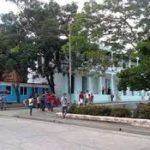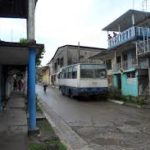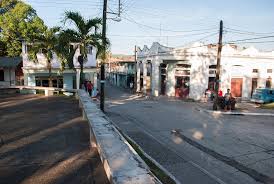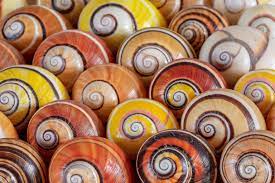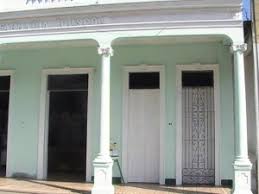SAGUA DE TANAMO, CUBA, PARADISE OF ENDEMIC SPECIES OF CUBAN FAUNA AND FLORA. PHOTOS..
Sagua de Tánamo, Cuba, within the municipality of the Holguín province has a territorial extension of 702 km², of which 545 km are in the Sagua river basin. The Sagua de Tánamo municipality is located to the Northwest of the eastern region of the Cuban territory. It limits the North and Northeast with the Frank País municipality; to the East with the Moa municipality; on the west with the Segundo Frente municipality, belonging to the Santiago de Cuba province (1976), and on the south, it limits with the El Salvador municipality of the Guantánamo province.
Sierra Cristal National Park is located partly in the municipality of Sagua de Tánamo and partly in neighboring Mayarí.
The municipality is divided into the neighborhoods of Barrederas, Bazán, Cananovas, Catalina, Esterón, Juan Díaz, Miguel, Pueblo, Sitio and Zabala. Carpenter, La Rosa, Rio Grande, La Guira, Naranjo.
DEMOGRAPHY
In 2004, the municipality of Sagua de Tánamo had a population of 52,013 inhabitants. With a total area of 704 km2 (272 square miles), it has a population density of 73.9 / km2 (191 square miles).

VIDEOS – Sagua de Tanamo Journey
STORY
The earliest references to the aboriginal presence in Sagua is when a Spanish brig departed from the then bay of the same name, in 1513, touching port along the entire north coast of the Island to Havana with the aim of subduing the chieftains of the aboriginal populations and put them at the service of their interests.
The presence of Cacique Guamá in Sagua in 1522 shows that the aboriginal population of this town was considerable. Christopher Columbus records this on his first trip, pointing out that the native population of this coast was very large.
Towards the end of the seventeenth century, the influence of the Haitian revolution generated the emigration of settlers to the neighboring island, the eastern region being the ideal place for their establishment, those who arrived with their endowments, culture, and the same system of exploitation.
Migration takes place through the Gran Piedra in Santiago de Cuba and from there they spread through the different areas of the eastern region; They passed to Yerba Guinea, Songo, La Maya, Caney, Cauto Cristo, and Guantánamo, they covered the entire territory until they reached an area that the French called “Monte Urrú” (today known as Monte Ruz). From that moment they spread through La Catalina until they reached the sagüeras lands.
Don Eugenio Revé was the greatest slave owner in the municipality of Sagua de Tánamo. He was white, a native of France, and arrived from Haiti, he settled in the territory with a large endowment in the place known as the Seat of Catherine, there he dedicated himself to the planting of Coffee and Cocoa to a great extent, an experience that he brought from Haiti also dedicated another part of the land to the cultivation of minor fruits and the raising of cattle, pigs and others.
In the old lands of Mr. Revé there was a site that was used as a cemetery in the area of La Catalina, it kept an immensity of skeleton of those men who did not have more than 30 years of life that indicates the existence of forced labor and corporal punishment in that time of slavery.
FLORA AND FAUNA
The flora of Sagua de Tánamo is not only characterized by its variety, but also by its distribution. According to studies, the first settlers who arrived in the territory brought textile and oilseed plants, cereals, tubers, vegetables, and fruits such as mango, banana, citrus fruits such as orange, lemon, and other varied.
The most exotic plant species that can be found anywhere in this municipality of Tanama is La Palma Real.
Other specimens of great utility to the economy of the municipality are Coffee, and viands: Banana burro or fungo, as they are commonly called by the pabladores of this area, Plátano macho, yucca, taro, sweet potato and in lesser amounts the tobacco, cocoa, and others.
In these mountainous areas, in addition to coffee, other species of precious wood trees grow, such as Cedar, Mahogany, Ocuje, Najesí, Majagua, and others.
In the most intricate area of the Tanameño municipality live varieties of endemic species of the Island such as El catey, known as a parakeet, capable of imitating the human voice by emitting short sentences and others such as El gavilán and el Zunzuncito.
An endemic bird of Cuba, whose song is considered one of the most beautiful in the world is the nightingale. According to studies, they are only located in the mountains north of Pinar del Río (Sierra de los Organos), Sierra Maestra, in the Cupeyal area and in the Holguinero municipality of Sagua de Tánamo. The woodpecker, the Cao, and the Totí also appear.
The variety of species of the fauna of Cuba, together with the beauty that characterizes some of its specimens, has earned the island the name of a Naturalist’s paradise. In the eastern region and which closely touches the municipality of Sagua de Tánamo, there are terrestrial mollusks, to cite an example, the Tanameñas mountains inhabit the famous polymites (polymita picta), considered the most beautiful terrestrial mollusk in the world.
In the area, you can also find anthropods such as scorpions and centipedes, insects such as the Avellaneda butterfly, amphibians such as the well-known Cuban frog, reptiles such as the green chipojo, terrestrial mammals such as the Bat, which are generally found in the caves of the territory.
EDUCATION
Sagua de Tánamo, for the 2003-2004 academic year, there were:
Primary Education: 7 urban and 140 rural schools for a total of 147 of which 4,111 students were receiving studies, against which 701 teachers and 460 teaching support persons were working.
Special Education: 2 schools that attended an enrollment of 366 students, one of them with an internal regime for part of its enrollment and semi-internal for the rest. Secondary Education: 5 institutions, 1 trade school, 1 ESBU, 2 ESBEC, and 1 IPA with 2,629 students, for whom approximately 313 teachers worked. Higher Secondary Education, 3 centers: 2 IPUEC and 1 IPVCP whose enrollment was 2 047.
1 nursery school with 167 young people enrolled for which 31 teachers and 21 teaching support people worked.
In this sector, the universalization of higher education has been carried out, with 4 headquarters in the municipality: a pedagogical one belonging to the Holguín Higher Pedagogical Institute (ISPH); the Municipal University Headquarters (SUM), attached to the Higher Institute of Metallurgical Mining of Moa (ISMMM), the Nancy Cuba Gozález Teaching Unit, attended by the Faculty of Medical Sciences of Holguín and finally that of Physical Culture governed by INDER. These 26 careers were studied with an enrollment of 1020 students.
Area code (s) + 53-24
SAGUA DE TANAMO, CUBA, PARAISO DE ESPECIES ENDEMICAS DE LA FAUNA Y FLORA CUBANA. PHOTOS.
Sagua de Tánamo. Municipio de la provincia Holguín cuenta con una extensión territorial de 702 km², de ellos, 545 km en la cuenca del río Sagua. El municipio Sagua de Tánamo se encuentra ubicado al Noroeste de la región oriental del territorio cubano. Limita al Norte y Nordeste con el municipio Frank País; por el Este con el municipio Moa; por el Oeste con el municipio Segundo Frente, perteneciente a la provincia Santiago de Cuba (1976), y por el Sur limita con el municipio El Salvador de la provincia Guantánamo.
El Parque Nacional Sierra Cristal está ubicado en parte en el municipio de Sagua de Tánamo y en parte en el vecino Mayarí.
El municipio está dividido en los barrios de Barrederas, Bazán, Cananovas, Catalina, Esterón, Juan Díaz, Miguel, Pueblo, Sitio y Zabala. Carpintero, la Rosa, Rio Grande, La Guira, Naranjo.
DEMOGRAFIA
En 2004, el municipio de Sagua de Tánamo tenía una población de 52.013 habitantes. Con un área total de 704 km2 (272 millas cuadradas), tiene una densidad de población de 73,9 / km2 (191 millas cuadradas).
HISTORIA
Las referencias más tempranas de la presencia aborigen en Sagua se tiene cuando de la entonces bahía del mismo nombre, en 1513 partió un bergantín español, tocando puerto en toda la extensión del litoral norte de la Isla hasta La Habana con el objetivo de someter a los caciques de las poblaciones aborígenes y ponerlas al servicio de sus intereses.
La presencia del Cacique Guamá en Sagua para 1522 muestra que la población aborigen de este pueblo era considerable. De ello deja constancia Cristóbal Colón en su primer viaje, señalando, que la población nativa de este litoral era muy numerosa.
Hacia finales del siglo XVII la influencia de la revolución haitiana generó la emigración de colonos hacia la isla vecina, siendo la región oriental el lugar idóneo para su establecimiento, los que arribaron con sus dotaciones, cultura y el mismo sistema de explotación.
 VIDEOS- Historia de Sagua de Tanamo.
VIDEOS- Historia de Sagua de Tanamo.
La migración se produce por la Gran Piedra en Santiago de Cuba y desde allí se extienden por las distintas zonas de la región oriental; pasaron a Yerba Guinea, Songo, La Maya, Caney, Cauto Cristo y Guantánamo, abarcaron todo el territorio hasta llegar a una zona que llamaron los franceses “Monte Urrú” ( hoy conocido por Monte Ruz). A partir de ese momento se extendieron por La Catalina hasta alcanzar las tierras sagüeras.
Fue Don Eugenio Revé el mayor esclavista del término de Sagua de Tánamo. Era de raza blanca, natural de Francia y llegado de Haití se asentó en el territorio con una gran dotación en el lugar conocido como el Asiento de la Catalina, allí se dedicó a la siembra de Café y Cacao en gran medida, experiencia que trajo de Haití, además dedicó otra parte del terreno al cultivo de frutos menores y la crianza de ganado, cerdos y otros.
En las antiguas tierras del señor Revé existió un sitio que fue utilizado como cementerio en la zona de La Catalina, el mismo guardó una inmensidad de osamenta de aquellos hombres que no contaban con más de 30 años de vida que nos indica la existencia del trabajo forzoso y el castigo corporal en ese tiempo de esclavitud.
 VIDEOS – Sagua de Tanamo Journey
VIDEOS – Sagua de Tanamo Journey
FLORA Y FAUNA
La flora de Sagua de Tánamo no solo se caracteriza por su variedad, sino también por su distribución. Según estudios los primeros colonizadores que llegaron al territorio trajeron plantas textiles y oleaginosas, cereales, tubérculos, hortalizas y frutas como el mango, Platano, cítricos como la naranja, limón y otras variadas.
La especie vegetal más exotica y que se encuentra en cualquier lugar de este municipio tanameño es la Palma Real.
Otros especímenes de gran utilidad a la economía del municipio son el Café, y las viandas: Platano burro o fungo, como comúnmente los llaman los pabladores de esta zona, el Plátano macho, la yuca, la malanga, el boniato y en menores cuantías el tabaco, cacao y otros.
En estas zonas montañosas crecen, además del café, otras especies de árboles de madera preciosa, como son el Cedro, la Caoba, el Ocuje, Najesí, Majagua, y otras más.
En la zona más intrincada del municipio Tanameño viven variedades de especies endémicas de la Isla como por ejemplo El catey, conocido por perico, capaz de imitar la voz humana emitiendo oraciones cortas y otros como El gavilán y el Zunzuncito.
Un ave endémica de Cuba, cuyo canto es considerado uno de los más bellos del mundo es el ruiseñor. Según estudios solo se localizan en las montañas al norte de Pinar del Río (Sierra de los órganos), Sierra Maestra, en la zona del Cupeyal y en el municipio Holguinero de Sagua de Tánamo. Figuran igualmente el pájaro carpintero, el Cao y el Totí.
La variedad de las especies de la fauna de Cuba, unido a la belleza que caracteriza algunos de sus especímenes, le ha ganado a la isla el nombre de paraíso de los Naturalistas. En la región oriental y que toca muy de cerca al municipio de Sagua de Tánamo son la presencia de moluscos terrestres, por citar algún ejemplo, en las montañas Tanameñas habitan las famosas polimitas (polymita picta), considerada el molusco terrestre más bello del mundo.
En la zona pueden encontrarse además antrópodos como alacranes y cienpies, insectos como la mariposa de la Avellaneda, anfibios como la conocida ranita de Cuba, reptiles como el chipojo verde, mamíferos terrestres como el Murciélago, que se encontrarse por lo general en las cuevas del territorio.
EDUCACION
Sagua de Tánamo, para el curso 2003 – 2004, existían:
Enseñanza Primaria: 7 escuelas urbanas y 140 rurales para un total de 147 en las que se encontraban recibiendo estudios 4 111 alumnos frente a los cuales se desempeñaban 701 docentes y 460 personas de apoyo a la docencia.
Enseñanza Especial: 2 escuelas que atendían una matrícula de 366 alumnos, una de ellas con régimen interno para una parte de su matrícula y semi – interno para el resto. Enseñanza Media: 5 instituciones, 1 escuela de oficios, 1 ESBU, 2 ESBEC y 1 IPA con 2 629 estudiantes, para los que laboraron aproximadamente 313 profesores. Enseñanza Media Superior, 3 centros: 2 IPUEC y 1 IPVCP cuya matrícula era de 2 047.
1 círculo infantil con 167 pequeños matriculados para los que laboraban 31 docentes y 21 personas de apoyo a la docencia.
En este sector se ha llevado a cabo la universalización de la educación superior existiendo en el municipio 4 sedes: una pedagógica perteneciente al Instituto Superior Pedagógico de Holguín (ISPH); la Sede Universitaria Municipal (SUM), adscripta al Instituto Superior Minero Metalúrgico de Moa (ISMMM), la Unidad Docente Nancy Cuba Gozález, atendida por la Facultad de Ciencias Médicas de Holguín y por último la de Cultura Física rectoreada por el INDER. En estas se estudiaban 26 carreras con una matrícula de 1020 estudiantes.
Area code(s) +53-24
Agencies/ Wiki/ Ecured/ Internet Photos/ YouTube/ Arnoldo Varona/ VIDEOS/PHOTOS> La Historia de Cuba
THE CUBAN HISTORY, HOLLYWOOD.



 SAGUA DE TANAMO, Cuba, paradise of Endemic Species of Cuban Fauna and Flora. * SAGUA DE TANAMO, Cuba, paraiso de Especies Endémicas de la Flora y Fauna Cubana. VIDEOS.
SAGUA DE TANAMO, Cuba, paradise of Endemic Species of Cuban Fauna and Flora. * SAGUA DE TANAMO, Cuba, paraiso de Especies Endémicas de la Flora y Fauna Cubana. VIDEOS.